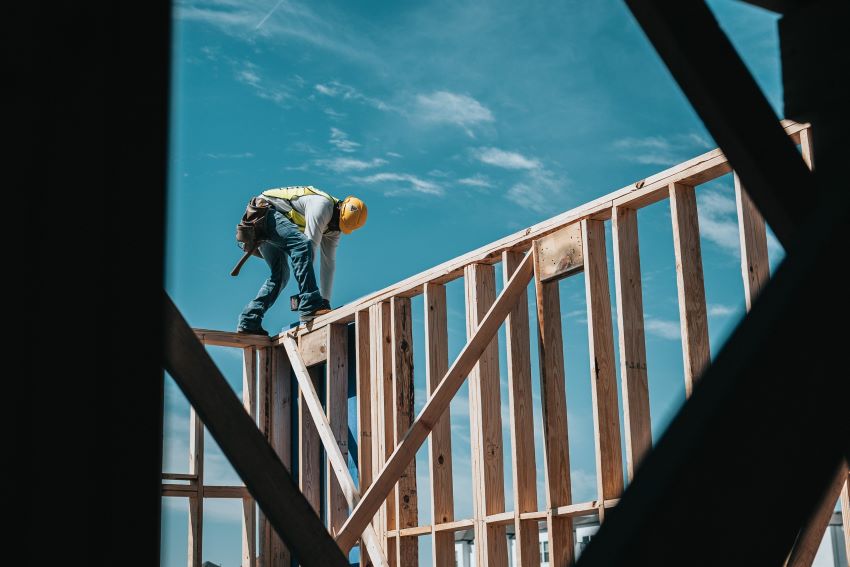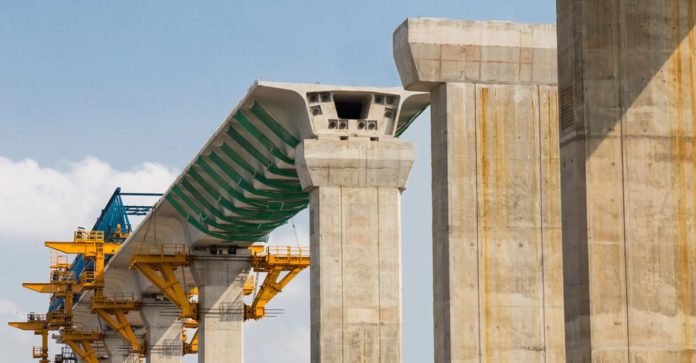Ensuring major infrastructure programmes succeed means embedding a culture of long-term thinking so that their outcomes form a lasting legacy, says Murray Rowden of Turner & Townsend.
After spending seven years living and working in the US, I can say with confidence that the opportunity for our industry remains as big as ever. Infrastructure renewal is high on president Biden’s agenda, with a specific focus on building long-term thinking to make major projects more attractive to investors and the supply chain while also making them more deliverable.
The landmark bipartisan Infrastructure Investment and Jobs Act (IIJA), passed in 2021, has been the first coordinated attempt at galvanising change for a generation. More recently, the Inflation Reduction Act is also stimulating the US green economy, with estimates that up to a trillion dollars will ultimately be spent to attract international businesses to invest in green technologies, buildings and renewable energy.
Since president Biden entered the White House, $92bn of industrial investment has been made in the US and new gigafactories, real estate and renewable energy systems all must be connected with new infrastructure.
These highly ambitious industrial and infrastructure strategies are inherently linked and they are being delivered against a backdrop of global and local market pressures – including rising costs, competition for funding, disrupted supply chains, carbon emissions targets and competition for skills.
Delivering lasting infrastructure renewal
A question that will resonate with governments around the world is, can the scale and impact of spend required provide security and stability against these new and emerging threats?
For the US, the long-term success of these laws will depend on whether they deliver infrastructure renewal, and if they can also provide greater US energy security and an industrial ecosystem to sustain it in the long run.
Setting these infrastructure programmes up for success requires embedding a culture of long-term thinking so that their outcomes form a lasting legacy, rather than a series of missed opportunities. Getting this right in the US can help raise the bar for our industry elsewhere in the world.
The first step in any market competing for resource is making projects more investible. To secure the supply chain this means addressing risk and opening up new approaches to procurement and delivery.
To make programmes compelling for the investment community the business case must be right for investors, ensuring that projects provide long-term, reliable returns and greater social, environmental and economic value.

Investment is key
Investing in major programmes is one way to tackle the types of tasks which transcend election cycles, such as the need to reduce long term carbon emissions, for which high-speed rail or the aviation sector would be tremendous targets.
The path to protecting ourselves from future climate-related events and building resiliency into our energy market is paved with increased investment upfront, so that flood defence measures and interconnector projects are already in the pipeline before sea levels rise any higher.
Different investment options also need to be explored, whether attracting pension funds to the infrastructure market or forging public private partnerships where risk can be shared. This links to the next step, making projects more deliverable. Skills development and widening the supply chain talent pool are essential.
In the US, the IIJA has the potential to pave the way for investment that can power a more inclusive US economy and help reshape construction supply chains. Working with local talent and suppliers and attracting disadvantaged suppliers into the value chain are key to this.
The industry must embrace the opportunity to work with minority and women-owned enterprises. There are 26 different classifications of disadvantage/underrepresentation deployed across the US to diversify the supply chain – the nuance of the metrics varies between east and west coast, but the private sector continues to explore all metrics of underrepresentation.
As more and more suppliers are welcomed into the supply chain, legislation may need to change to keep pace on the definition of disadvantage, as these suppliers grow in scale and success.
The importance of data
Improving project deliverability also calls for a greater understanding of data and analytics, which a more diverse, talented workforce will provide. Well-run projects and programmes prioritise technological investment and focus on data to make informed decisions, improving both delivery and asset management over the long-term.

Technology can be harnessed to aggregate data, guide decision making, measure performance against benchmarks and establish best value asset solutions. Data harvesting is key. But without the ability to translate this into useful information it’s impossible to set a baseline on which to deliver productivity targets or work collaboratively with a supply chain to improve performance.
The third and final point is about making projects world class. Learning from infrastructure global best practice is integral to getting set up for success and building a world class industry in any country, whether it be an urban metro in Australia or a major airport hub in the US.
Industry needs to go ‘above and beyond’
To do this, clients and supply chains need to consistently out-perform programme baselines. We need to go ‘above and beyond’ as a standard. That’s a significant cultural and behavioural shift for a construction industry in many countries that has a habit of accepting mediocre performance – often because the data hasn’t been assembled to prove it.
Clients need to be informed so that they can set challenging but deliverable baselines, measuring performance over a sustained period that is likely to extend far beyond the lifecycle of a single project.
With a buoyant infrastructure pipeline in the US and many other global regions we simply cannot overlook the essential elements that set up major projects for long-term success. Fit-for-purpose operating models, improved use of technology and data and embracing greater supply chain diversity are the foundations of world-class project initiation.
Following these three steps will make a difference though. But to go even further, our industry needs to look at the challenges we face collectively and ignite a culture of change. If we can do that then a new way of working is possible. In time this will ensure that infrastructure programmes in the US – and beyond – can deliver the seismic changes in performance necessary to create a lasting legacy for our societies and for our industry.
Murray Rowden is global head of infrastructure at Turner & Townsend.


















